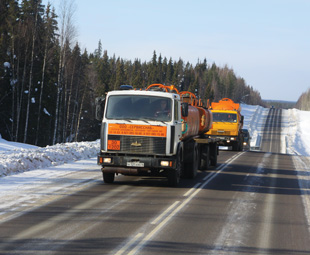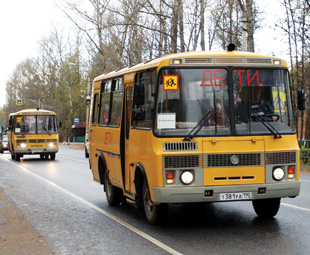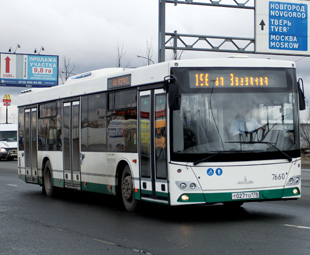Revved-up Russia

Russia: the land of breathtaking palaces, fermented potatoes, cute fluffy hats and kamikaze drivers – at least according to Facebook and YouTube
South Africans tend to be a little sceptical about the skills of other nations who claim to have the craziest road conditions – and drivers – in the world. What are the reasons behind Russia’s reputation for causing such terror among those tourists who dare to get behind the wheel?
Russia has the same basic road laws as South Africa. The Russians have, however, also developed a driving culture where all rules are up for negotiation, rarely enforced, and the traffic police seem as open to “donations” as ours are. So, at face value, South Africans should have an intuitive understanding the rules of Russian roads, but don’t get too confident just yet.
The sheer size of Russia and its extreme temperatures play a huge role in the terrible reputation of that country’s drivers. At 17 098 242 km², Russia is 14 times bigger than South Africa and temperatures can vary between 40°C and -40°C.
This means that road maintenance is an enormous task. The drastic changes in temperature can cause roads to crack, and the spiked tyres, which are necessary to drive when roads are iced over, also do a lot of damage to the roads – which then becomes a hazard once the ice thaws in spring.
No surprise then that Russia is always several steps behind in keeping up with repairs. In many cases repairs aren’t even attempted. When repairs are undertaken, however, the Russian authorities are notorious for creating chaos in the process. For example, in 2010, construction on the main road leading to Moscow’s international airport lead to such delays that passengers and pilots alike regularly missed their flights.
 Something we have in common with the Russians is our obsession with fast and powerful cars. This has created a cocktail of V8 power, long deserted roads covered in black ice and peppered with cracks, potholes and unexpected gaps where the road surface has disintegrated entirely. Throw in drivers who simply love to prove they’re faster than anyone else, and we’re starting to understand why Russia may just be ahead of South Africa in the “dangerous driving” category.
Something we have in common with the Russians is our obsession with fast and powerful cars. This has created a cocktail of V8 power, long deserted roads covered in black ice and peppered with cracks, potholes and unexpected gaps where the road surface has disintegrated entirely. Throw in drivers who simply love to prove they’re faster than anyone else, and we’re starting to understand why Russia may just be ahead of South Africa in the “dangerous driving” category.
What about road rage? Here again, the Russians seem to have the upper hand. Not only are their roads more treacherous and cities more gridlocked than ours, but, until recently, vehicle insurance was not required when purchasing a car in Russia.
This created a whole eye-for-an-eye sub-culture, whereby the victim of a minor bumper bashing, or parking-lot mishap, would simply return the favour by damaging the offending vehicle to their satisfaction.
It is, therefore, surprising that the willingness to help stranded drivers is where the Russians truly put us to shame … it’s a common sight to see road users helping others at accident sites, offering someone a tow or a lift, and even stopping to help push vehicles off the road in freezing weather.
In a country where you can freeze to death in mere minutes, the “crazy” Russian drivers instantly become good Samaritans when the chips are down. It will be a great day when South Africans accept this challenge.
Russian market in a real pickle!
The Russian commercial vehicle industry portal, Comtrans.biz, reports that the Russian commercial vehicle market ended 2015 in a deep crisis. Sales across all segments and manufacturers were down.
Light Commercial Vehicles (LCVs)
In 2015, the Russian market, according to research company Autostat Info, sold just 84 775 LCVs. By December, sales were 46,6 percent lower year-on-year.
 The leader of the segment, GAZ, ended the year 33,7 percent down from the year before, yet increased its market share from 34,8 to 45,6 percent. The most popular model in the LCV market was the company’s Gazelle NEXT – with 12 971 units sold, down from 2014 by 35,5 percent.
The leader of the segment, GAZ, ended the year 33,7 percent down from the year before, yet increased its market share from 34,8 to 45,6 percent. The most popular model in the LCV market was the company’s Gazelle NEXT – with 12 971 units sold, down from 2014 by 35,5 percent.
Trucks – medium and heavy commercial vehicles
These segments of the Russian market suffered more than any of the others. During the year, sales were down 44,4 percent to 47 264 vehicles.
Despite a drop in sales of 34,5 percent, KAMAZ remained the leader in the truck segment; selling 17 384 trucks and celebrating a market share increase of 8,4 percent to 40,6 percent. The KAMAZ-65115 sold a total of 4 144 units to be the top-selling truck in 2015.
Buses
Compared to other segments, the case of bus manufacturers is not so bad – overall sales fell “only” 23,5 percent, to 8 881 units. In December, the market dropped 43,3 percent, with just 904 new buses sold.
The leader of the new-bus market in 2015 was PAZ, despite sales of the brand falling by 23,6 percent, from 6 458 to 4 935 units. It’s share of the bus segment rose by 7,5 percent to 67,4 percent.
At the end of 2015, analysts predicted a further fall in sales of commercial vehicles across all segments for 2016. By the end of the first quarter of this year, truck sales had fallen 23,1 percent. However, analysts say that, even with the drop in sales during March compared to the same period of last year, the bottom of the market has, in principle, been achieved.
However, the recovery is expected to be long and difficult while there are no signs of the Russian economy overcoming its recession.
Published by
Focus on Transport
focusmagsa




